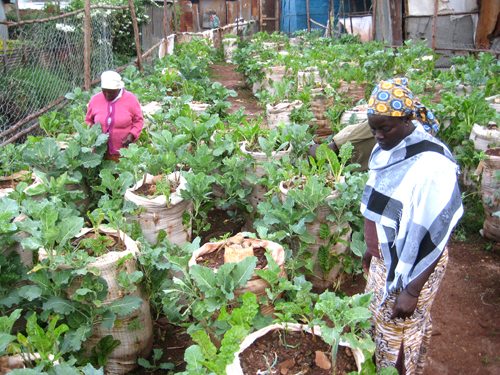The rising population in both urban and rural areas is a boost to kale — popularly known as sukuma wiki — farmers.
However, as the demand rises, land is shrinking fast. This compounds the food insecurity problem.
Appropriate technologies for growing of vegetables like kale in limited spaces, therefore, should be adopted.
One such technology is bag culture, also referred to as sack gardening, multi-storey or vertical farming. Bag culture improves food security and incomes.
It facilitates growing of vegetables in areas without suitable soils or adequate space, promotes efficient and effective utilisation of available water and nutrients and provides fresh, safe and clean vegetables.
What you need for growing kale in bags
A manila bag of desirable size, top soil and well-decomposed compost or animal manure, gravel, cylindrical can open on both ends (gorogoro), clean water, watering can or hose pipe, a knife or any other tool for cutting through the bag, healthy kale seedlings and clear plastic sheet.
The size of the bag depends on the available space, quantity of growing media (soil plus manure), number of seedlings to be transplanted and amount of water available for irrigation.
The top soil and manure is mixed in the ratio of 1:1. In order to eliminate soil borne pests and pathogens, the media should be treated by moistening the mixture, covering with clear plastic sheet and subjecting it to strong sunlight for one to two weeks.
This process is termed as solarisation. Solarised media should be used with clean materials, including water for irrigation to avoid recontamination.
Kale seedlings for bag culture should, therefore, be raised in nurseries where high level of sanitation is observed or sourced from reputable nurseries. The varieties ‘Thousand Headed’ and ‘Kale Keeper’ are recommended for bag culture due to their long harvesting period and indeterminate nature.
Construction of a bag garden
The gunny bag is filled with the mixture of top soil and growing media. The cylindrical hollow can is placed in the middle of the growing media and filled with the gravel. The area around the can is filled with the growing media up to the brim and the can is gently pulled up, dropping the gravels in the middle.
The can is then placed on top of the gravel in the centre of the growing media, refilled with more gravel and the area around it filled with the growing media as described above.
The refilling of the can and filling its surrounding area with the growing media is repeated until the bag is filled. This process creates a continuous core of gravel in the centre of the bag mainly for purposes of drainage and infiltration of water during irrigation.
How psychology of abundance and scarcity affects your money today
Once the bag is filled with the growing media, planting holes are prepared by making T-cuts on the sides of the sack at a regular spacing (at least 30cm apart).
The kale seedlings are then transplanted by inserting a seedling into each planting hole starting from the lower portion. More kale seedlings are finally planted in open top area of the bag.
Transplanting is followed by thorough watering of the bag. Water is applied on top of the gravel forming a column or core in the centre of the bag.
The plants are watered daily if possible or on alternate days. The core may also be utilised for fertiliser application if necessary. The fertilisers, however, must be highly soluble in water and applied as liquid feeds. Insect pests and diseases may be controlled conventionally using pesticides. However, the current trend is to minimise chemical residues in leafy vegetables like kale for human and environmental safety.
Planting a few herbs like coriander (dhania) or rosemary among the kale may repel insect pests such as aphids, diamond-back moth and whiteflies from the kale crop.
The kale will be ready for harvesting when the leaves are fully expanded. To avoid over-harvesting, at least three fully expanded leaves should be left at the top. The harvested leaves should be maintained under cool conditions until they reach the consumer.








